My converted 1920s
Washburn Banjo
© Frank Ford, 2/9/99; Photos by FF, 2/9/99
Here's the original neck from which I salvaged the peghead overlay:
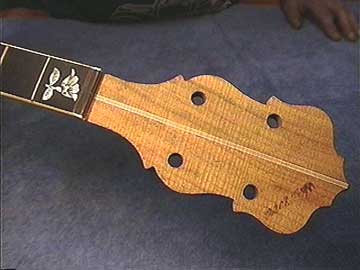
It was walnut, and I presume the original shell was walnut as well. Around 1972 I bought the broken neck from a local violin maker without any other parts. It was a 17-fret tenor, and even the dowel stick was missing. A year or two earlier I had bought a Lyon and Healy (the parent of Washburn) banjo shell from Campbell Coe's Campus Music Shop in Berkeley. It is made of blond maple and is an elegant old banjo shell. It came with no neck or other parts, so I didn't have any knowledge of the original neck.
Here's the peghead overlay in place today on the new neck:
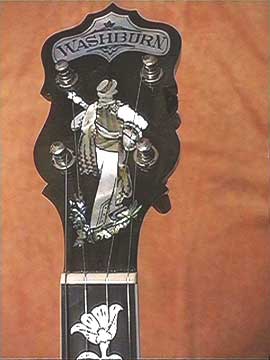
I reproduced the fingerboard inlays, and created two new similar designs to mark the extra fret spaces above the 17th fret.
The original walnut neck had green laminations, so I used some on my new neck behind the "backstrap" ebony overlay and under the ivoroid and black fingerboard binding:
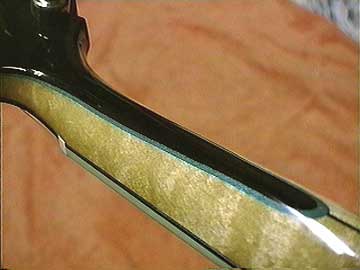
Here's the outside of that fine old banjo:
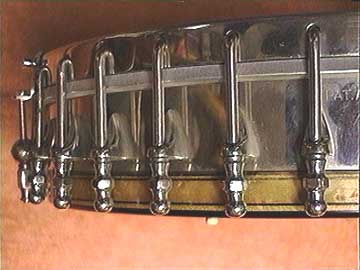
The hooks are drilled right into the side of the tension hoop, so an armrest isn't necessary for playing comfort. Just look at that wide nickel plated brass bracket band. This banjo was made to last!
There's a wide spun brass tone ring that gives this instrument a bell-like shimmering tonal quality:
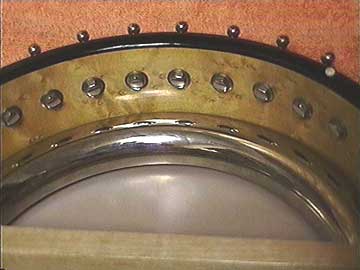
There are four little ivoroid buttons on the back edge of the shell to accommodate a "spin-on" resonator. I probably wouldn't use a resonator even if I had one because this is such a fine open back banjo.
Back to the Way We Were
Back to Index Page